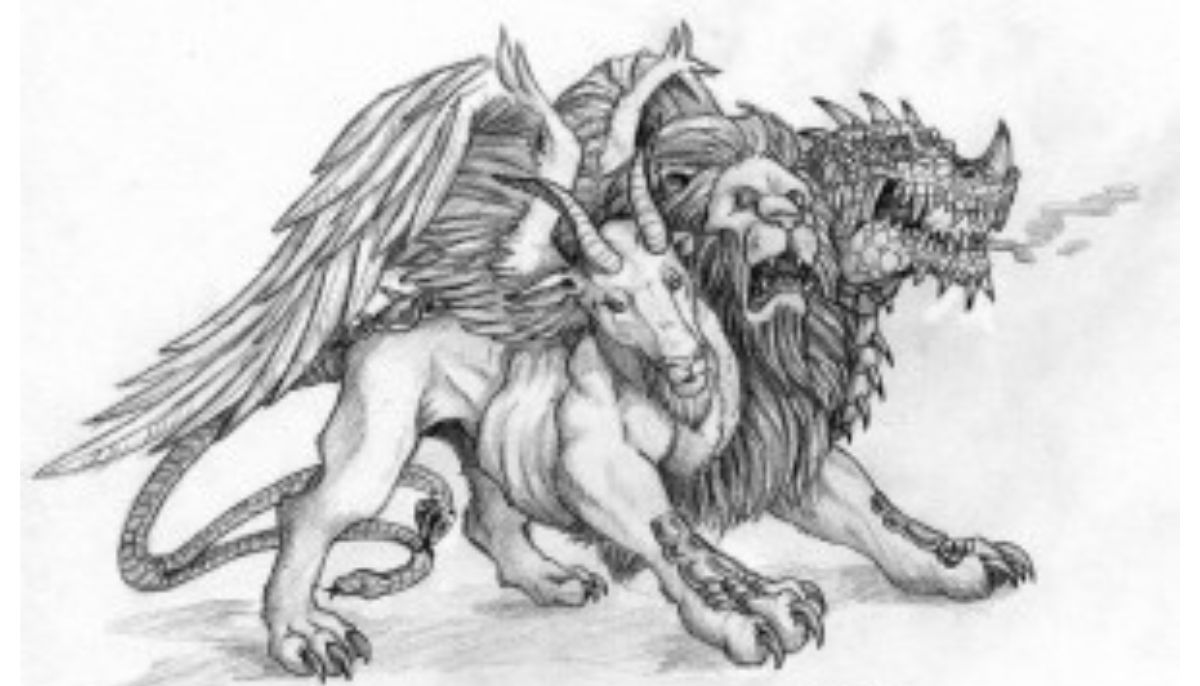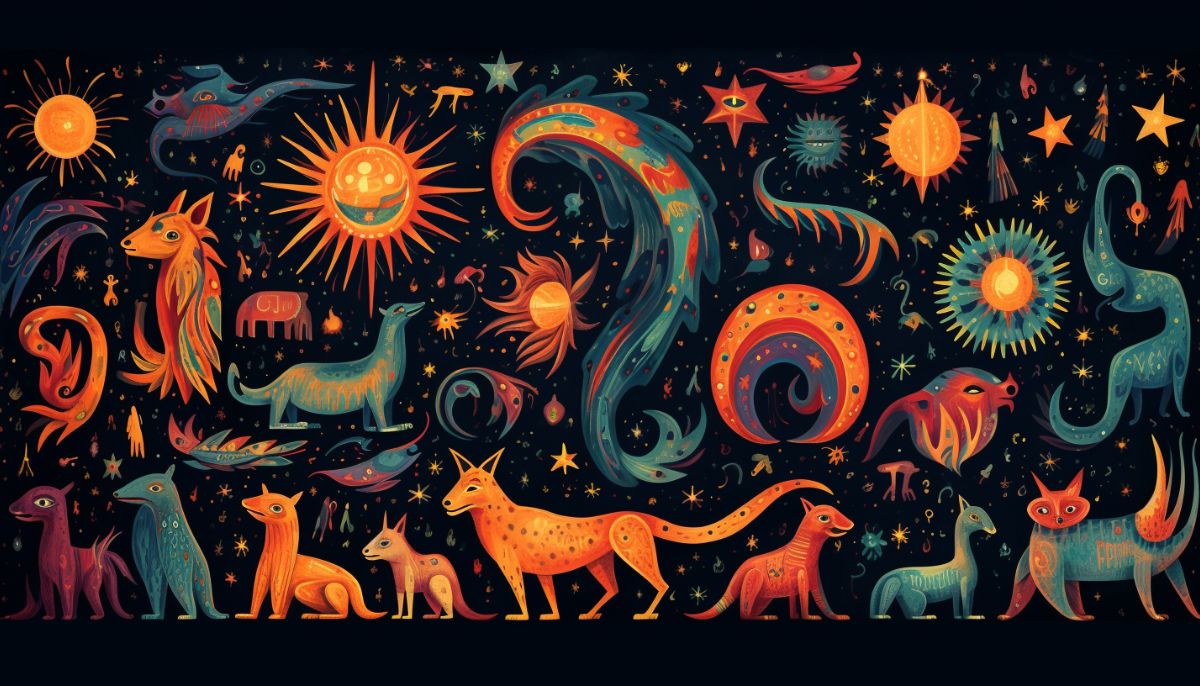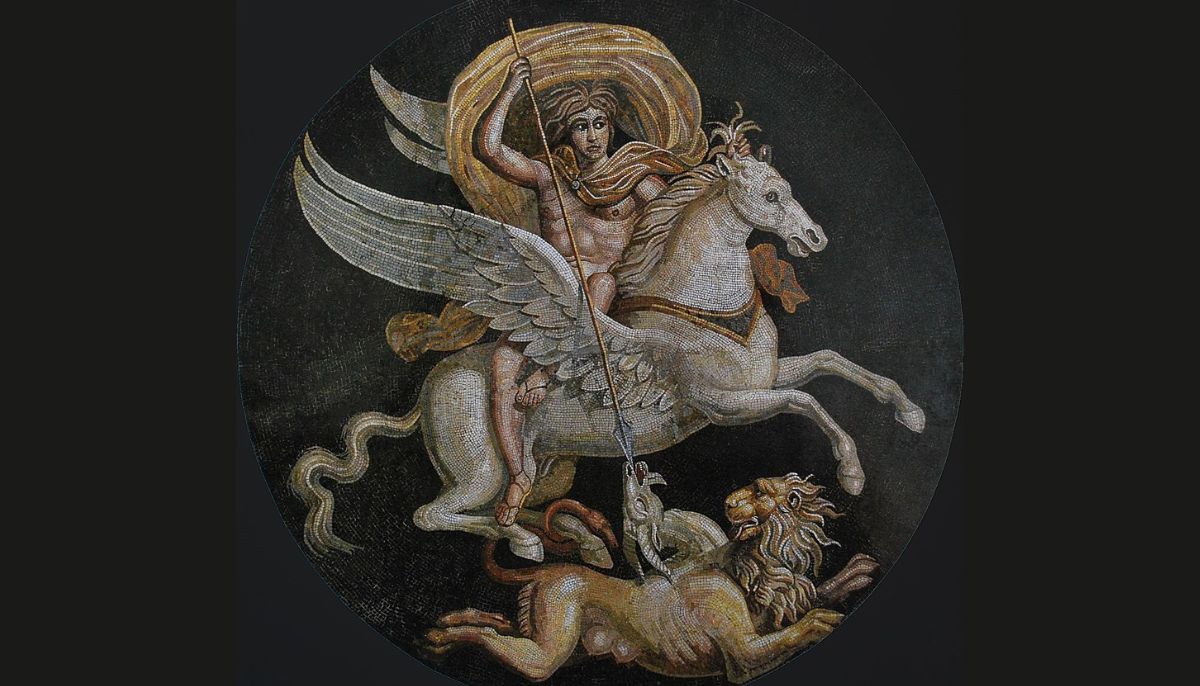Prepare to confront the fearsome Chimera of Greek mythology. Dive into its legendary exploits, terrifying presence in Greek myth, and symbolic relevance in the captivating world of ancient stories.
What did the Chimera look like?
In Greek mythology, the Chimera was a monstrous hybrid, described vividly in ancient texts:
Homer’s Iliad: Homer’s early account in the Iliad portrays the Chimera as an immortal creature with a lion’s head at the front, a serpent’s tail at the rear, and a goat’s torso in between. It was known for exhaling a fearsome blaze of fire, presenting a terrifying and awe-inspiring image.
Hesiod’s Theogony: Hesiod’s rendition closely echoes Homer’s description, attributing the Chimera’s birth to Echidna. This creature was depicted as a formidable entity, possessing three heads—a lion’s, a dragon’s, and a goat’s—all contributing to its nightmarish appearance. Its breath unleashed a scorching inferno.

What does Chimera mean in Greek?
The term “Chimera” (Χίμαιρα) in Greek mythology signifies a fantastical or illusory creation. Its roots lie in “kheima,” meaning winter, and “khimaros,” referring to a she-goat.
This name aptly encapsulates the Chimera’s mythical and chaotic composite, embodying a creature born from the realms of imagination and nature’s unpredictable forces.
Why is the Chimera female?
The Chimera is predominantly portrayed as female, a choice rooted in the term “khimaros,” which specifically pertains to a she-goat.
The fluid nature of gender in Greek mythology allowed for such amalgamations of both feminine and masculine attributes. The Chimera’s female designation adds to this legendary beast’s enigma and unsettling aura.
Why was the chimera feared?
The Chimera held significant symbolic weight in ancient Greece, serving as an omen of impending calamity. Its monstrous form and fiery breath were associated with storms, shipwrecks, and natural disasters, particularly volcanic eruptions.
The Chimera stood as a foreboding presence, embodying elemental chaos and the capriciousness of the natural world in the eyes of the ancient Greeks.
Chimera in Greek mythology
The Chimera, a nightmarish creature of Greek mythology, emerged from the lineage of terrifying beings. It was believed to be the offspring of Typhon and Echidna, both formidable and monstrous entities known for their frightful natures.
This parentage endowed the Chimera with its fearsome and otherworldly attributes.
What were the chimera’s powers?
This formidable creature was a composite of diverse and grotesque elements. It boasted a lion’s body, a goat’s head rising from its back, and a serpent’s tail, culminating in a truly nightmarish form.
What made the Chimera even more formidable was its ability to exhale a breath of scorching fire, adding to its menacing and lethal arsenal.
Who killed the chimera?
Among the most renowned tales involving the Chimera is its epic confrontation with the hero Bellerophon.
As part of his heroic trials, Bellerophon embarked on a quest to vanquish this formidable creature. Riding the majestic winged horse Pegasus, Bellerophon engaged the Chimera in a battle of epic proportions. He thwarted the Chimera’s fiery onslaught through cunning strategy and unyielding courage.
Bellerophon’s ultimate victory over the Chimera is a testament to the ideals of heroism in Greek mythology. It showcases the triumph of courage and resourcefulness over seemingly insurmountable challenges. Bellerophon’s successful conquest of the Chimera solidified his status as a legendary hero, celebrated for his exceptional feats.
Chimera symbolism
The myth of the Chimera serves as a profound illustration of Greek monsters’ complex nature. Often born from unions of monstrous forebears, they embody primal fears and the mysteries of the unknown.
With its formidable presence and fiery breath, the Chimera encapsulates the essence of terror, challenging mortals to rise above and conquer the unimaginable.
Want to know more about the creatures and monsters of Greek Mythology?

Explore more articles like this in our broader series on Greek monsters. To delve even deeper into the world of mythical creatures, be sure to check out our comprehensive hub article on the monsters of Greek mythology.






